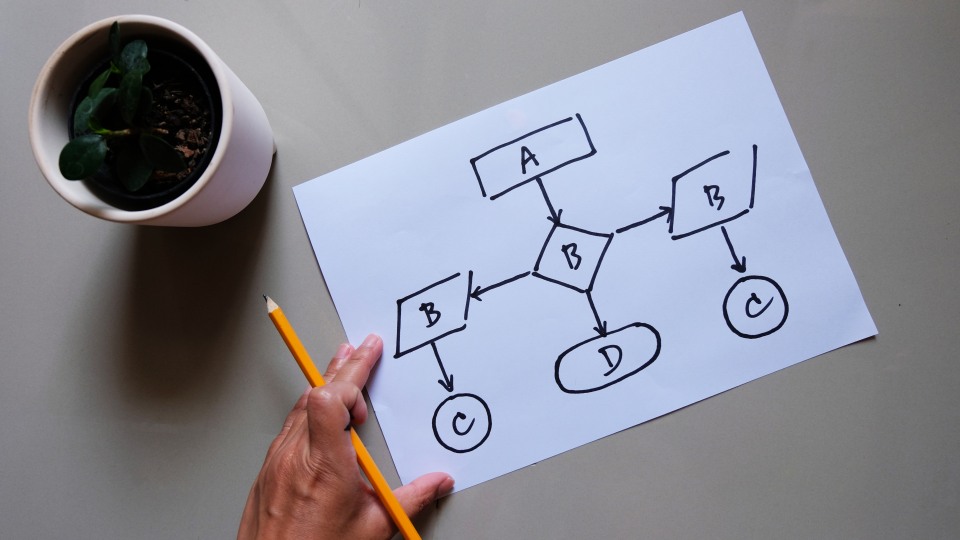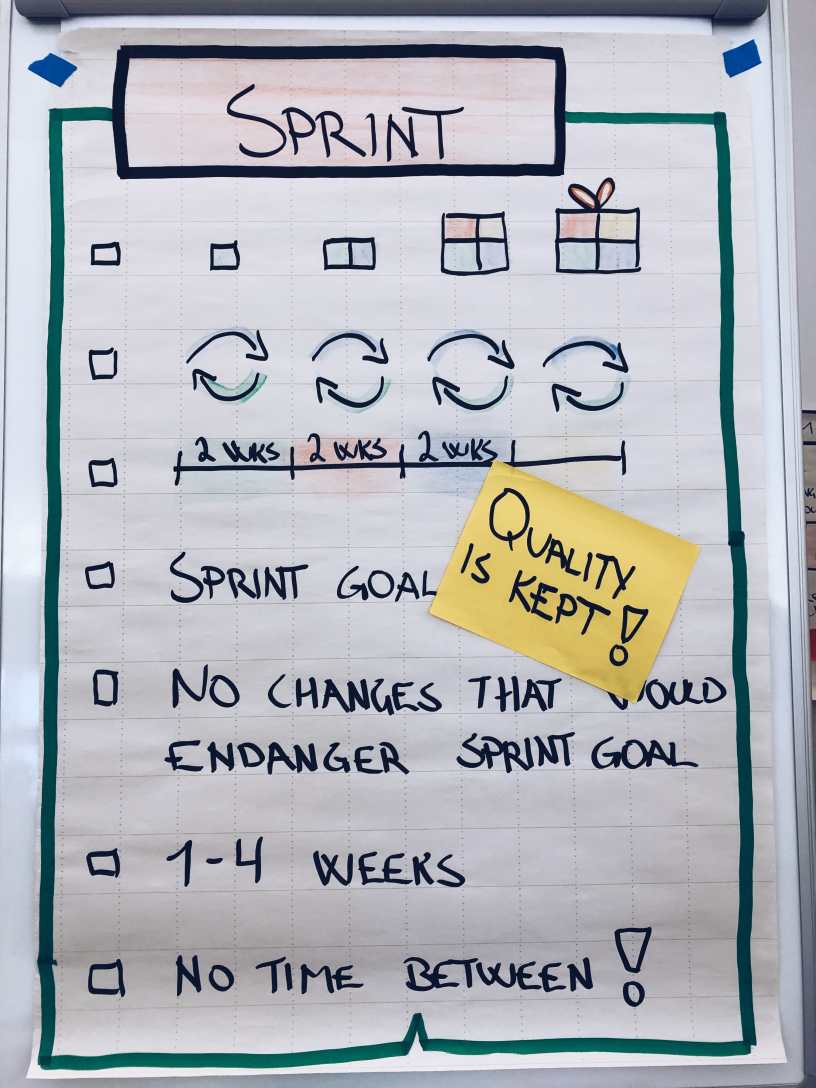In the fast-paced world of software development, a technical product owner plays a crucial role in bridging the gap between the business and technical aspects of a product. As the title suggests, a technical product owner (TPO) is responsible for owning and driving the development of a technical product, ensuring that it meets the needs of both the business and the end-users.
This comprehensive guide will delve into the key responsibilities, technical skills, challenges, and strategies that can help unlock the full potential of a technical product owner.
Key Responsibilities of a Technical Product Owner
As a technical product owner, one of the primary responsibilities is to define and prioritize the product backlog. This involves gathering requirements from stakeholders, breaking them down into user stories, and ensuring that the team has a clear understanding of what needs to be built. The TPO is also responsible for continuously refining and reprioritizing the backlog based on changing business needs and market dynamics.
Another crucial responsibility is to serve as the voice of the customer. The TPO must deeply understand the target audience and their pain points, ensuring that the product addresses their needs effectively. This requires conducting user research, gathering feedback, and collaborating closely with the UX/UI team to create a user-centric product.
Additionally, the TPO must facilitate effective communication and collaboration between the development team and other stakeholders. This involves conducting regular meetings, providing clarifications on requirements, and ensuring that everyone is aligned on the product vision and goals. The TPO also acts as a mediator, resolving conflicts and making tough decisions when necessary.
Skills and Qualifications Required for a Technical Product Owner
To excel as a technical product owner, a diverse set of skills and qualifications is required. Firstly, a strong technical background and a firm understanding of both the technical and business domains is essential. The TPO should have a deep knowledge of software development processes, technologies, and architectures, enabling effective communication with the development team.
Simultaneously, a solid understanding of the business goals, market trends, and user needs is crucial for prioritizing and shaping the product roadmap.
Exceptional communication and interpersonal skills are also vital for success in this role. The TPO must be able to articulate ideas clearly, listen actively, and build strong relationships with stakeholders. Effective collaboration, negotiation, and conflict resolution skills are also key, as the TPO interacts with diverse teams and personalities.
Moreover, the ability to think strategically and make data-driven decisions is essential. The TPO must possess analytical skills to gather and interpret data, identify trends, and make informed decisions that drive product success. Adaptability, resilience, and a growth mindset are also important qualities for handling the dynamic and ever-changing nature of software development.
Challenges Faced by Technical Product Owners and How to Overcome Them
While the role of a technical product owner can be rewarding, it is not without its challenges. A TPO armed with the ideal technical capabilities will find it easier to navigate the various challenges associated with the product development process.
1. Establishing a Single Clear Vision
One common challenge is managing competing priorities and conflicting expectations from different stakeholders. To overcome this, the TPO must establish a clear product vision and communicate it effectively to all stakeholders. Regular alignment meetings and prioritization exercises can help ensure that everyone is on the same page.
2. Keeping Up with Developmental Change
Another challenge is dealing with changing requirements and scope creep. Agile methodologies, such as Scrum or Kanban, can provide a framework to manage these product development lifecycle challenges effectively. By breaking down work into smaller iterations and regularly reviewing and adapting the product backlog, the TPO can respond to changes more efficiently and keep the project on track.
3. Building a Sustainable Process and Product
Additionally, technical product owners often face the challenge of striking the right balance between technical debt and delivering new features. It is crucial to foster a culture of continuous improvement and ensure that technical debt is regularly addressed.
Product development is an ongoing process so it’s not rare to see a TPO work on product optimization, SaaS product redesign, hardware product improvement or completely pivoting. Collaborating closely with the development team and involving them in the decision-making process can help find the right balance and maintain a healthy and sustainable product.
Want to leverage the skills of a TPO?
Contact Growth Hackers
Establishing Effective Communication Channels with Stakeholders
Effective communication is the backbone of success for a technical product owner. Establishing clear and efficient communication channels with stakeholders is paramount. Regular meetings, such as sprint planning, backlog refinement, and product demos, provide opportunities to gather feedback, clarify requirements, and align priorities.
Moreover, leveraging collaboration tools, such as project management software or communication platforms, can help streamline communication and keep all stakeholders informed. These tools enable real-time updates, document sharing, and discussions, ensuring that everyone is on the same page.
Another vital aspect of communication is actively listening to stakeholders and valuing their input. By creating a safe and inclusive environment, technical product managers can encourage open and honest discussions, fostering trust and collaboration. Regularly seeking feedback and conducting user research also helps in gaining valuable insights and refining the product.
Agile Methodologies and Their Relevance to the Role of a Technical Product Owner
Agile methodologies have revolutionized the software development industry, and they are highly relevant to the role of a technical product owner. Agile frameworks, such as Scrum, Kanban, or Lean, emphasize iterative and incremental development, collaboration, and adaptability.
As a technical product owner, embracing Agile methodologies enables you to respond to changing requirements and market dynamics more efficiently. By breaking down work into smaller, manageable iterations, you can deliver value to the customers faster and gather feedback early on. Agile methodologies also promote transparency and visibility, allowing stakeholders to have a clear view of the project’s progress.
Furthermore, Agile ceremonies, such as daily stand-ups, sprint reviews, and retrospectives, foster collaboration and continuous improvement. These ceremonies provide opportunities to gather feedback, identify bottlenecks, and make adjustments to ensure the success of the product.
The Importance of Technical Knowledge for a Product Owner
While a technical product owner does not need to be a developer, having a solid technical foundation is highly beneficial. Technical knowledge allows the TPO to effectively communicate with the development team, understand technical constraints, and make informed decisions.
A deep understanding of software development processes, architectures, and technologies helps in breaking down requirements into actionable user stories. It also enables the TPO to prioritize effectively and make trade-offs when necessary. Technical knowledge also facilitates meaningful conversations with the development team, fostering trust, and ensuring that the product is built to meet the technical standards.
However, it is important to strike a balance between technical knowledge and business acumen. A TPO should not get overwhelmed with technical details but focus on the overall product vision and aligning it with business goals. Collaborating closely with the development team and continuously learning about emerging technologies and industry trends can help maintain the right balance.
Tips for Successful Collaboration with Development Teams
Collaboration between the technical product owner and the development team is crucial for the success of a product. Here are some tips to follow to improve team collaboration.
Establish a Shared Understanding
Ensure that everyone has a clear understanding of the product vision, goals, and requirements. Conduct regular meetings and workshops to align expectations and gather feedback.
Encourage Open Communication
Create an inclusive environment where your team members are comfortable in giving their outputs, sharing their ideas, challenges, and concerns. Pay attention to what they have to share and make them a part of the decision-making process.
Provide Clarity and Context
Communicate the why behind the requirements. Help the development team understand the business value and user impact of their work. This fosters a sense of ownership and motivation.
Collaborate in Sprint Planning
Involve the development team in sprint planning sessions to ensure that they have a say in the work they will be delivering. Empower them to estimate and commit to the work they can realistically complete.
Regularly Review and Adapt
Conduct frequent retrospectives to reflect on what went well and what can be improved. Use these insights to adapt and refine the product backlog and development processes.
Get help from a technical product owner and drive innovation today!
Tools and Resources for Technical Product Owners
The role of a technical product owner requires more than a single technical resource or tool to make it through the development process. Here are some popular technical resources and tools.
- Project Management Software: Tools like Jira, Trello, or Asana help in managing and organizing the product backlog, tracking progress, and assigning tasks to the development team. They also provide collaboration features, such as document sharing and commenting.
- Communication Platforms: Platforms like Slack or Microsoft Teams enable real-time communication and collaboration among team members. They facilitate quick discussions, file sharing, and integration with other tools.
- Prototyping and Wireframing Tools: Tools like Sketch, Figma, or Adobe XD assist in creating visual prototypes and wireframes. They enable the TPO to collaborate with UX/UI designers and gather feedback from stakeholders.
- User Research Tools: Tools like UserTesting or Optimal Workshop help in conducting user research, usability testing, and gathering valuable insights from real users.
- Training and Certifications: Various training programs and certifications, such as Certified Scrum Product Owner (CSPO) or Agile Product Management, provide in-depth knowledge and techniques specific to the role of a technical product owner. These resources can enhance skills and credibility.
Career Progression and Opportunities for Technical Product Owners
The role of a technical product owner offers vast opportunities for career progression and growth. With experience and proven success, a TPO can advance to higher-level positions like Product Manager or Head of Product. These roles involve broader responsibilities, such as strategic product planning, market analysis, and team leadership.
Moreover, a technical product owner can explore opportunities in different industries and domains. The skills and knowledge acquired in this role are transferable, allowing TPOs to work on a diverse range of products and technologies. This exposure enhances professional development and widens the scope for career advancement.
Continuous learning and staying up-to-date with industry trends and emerging technologies are critical for career progression. Joining professional communities, attending conferences, and pursuing advanced certifications can provide valuable networking opportunities and expand knowledge horizons.
Final Thoughts on What a Technical Product Owner Does
Fitting into a successful technical product owner role requires a combination of technical expertise, business acumen, communication skills, and adaptability. By mastering the key responsibilities, overcoming challenges, and embracing Agile methodologies, a TPO can unlock the full potential of its role and drive the success of a technical product.
Continuous learning, effective collaboration, and leveraging the right tools and resources further enhance the chances of success. As the software development landscape continues to evolve, the role of a technical product owner will remain essential in delivering innovative products that meet the needs of businesses and end-users.
And if your business needs require professional digital marketing services, Growth Hackers is the partner you need. At Growth Hackers, we believe that your business has the potential to achieve incredible growth and success. That’s why we’re committed to using our expertise in digital marketing to help you get there.
Our data-driven approach allows us to make informed decisions and measure results, ensuring that every marketing effort we make is backed by tangible results. But we don’t stop there. We prioritize long-term sustainability, using only ethical and effective practices to ensure that your ROI continues to improve over time. With our help, you can look forward to better business growth and a brighter future for your brand.
Contact Growth Hackers today and let us know your requirements and we will get back to you soon with the solution you seek.









